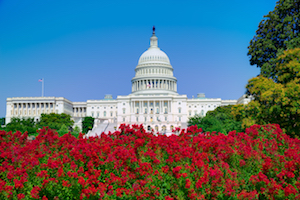A new survey of plan sponsors—mainly small employers—finds broad-based support for several provisions, but only lukewarm support for others.
 The latest quarterly Principal Retirement Security Survey asked the plan sponsors for their initial reaction to several provisions contained in the bipartisan SECURE Act 2.0 legislation introduced by House Ways and Means Committee Chairman Richard Neal (D-MA) and Ranking Republican Kevin Brady (R-TX).
The latest quarterly Principal Retirement Security Survey asked the plan sponsors for their initial reaction to several provisions contained in the bipartisan SECURE Act 2.0 legislation introduced by House Ways and Means Committee Chairman Richard Neal (D-MA) and Ranking Republican Kevin Brady (R-TX).
Principal surveyed 160 plan sponsors representing more than 11 industries; most of the respondents (76%) employed fewer than 250 employees. Following are a few of the changes proposed in the SECURE Act 2.0 legislation, along with the respective percentages in relation to employers’ reactions:
- Increasing catch-up contribution limits to $10,000 and $5,000 (for SIMPLE plan participants) for those age 60 or over (82% positive reaction).
- Offering a new credit to businesses with 100 or fewer employees to offset up to $1,000 of employer contributions for each employee, which gradually phases out over five years (54% positive reaction, with 13% negative).
- Raising the RMD age from 72 (set by the SECURE Act) to 75 for DC plans and traditional IRAs (54% positive reaction, with 14% negative).
- Requiring new DC plans to enroll participants automatically with at least a 3% contribution rate and increase the rate through auto-escalation by 1% per year until it reaches 10% (36% positive reaction, but 35% negative).
- Allowing individuals to pay down their student debt instead of contributing to a 401(k) plan and still receive an employer-matching contribution to the employer-sponsored retirement plan (31% positive reaction, but 41% negative).
- Allowing employers to offer small, immediate financial incentives, such as gift cards, to encourage plan participation; currently, only matching contributions can be used as an incentive to make elective contributions (29% positive reaction, 41% neutral and 29% negative).
Retirement Readiness Looms Large
One year into the COVID-19 pandemic, many plan sponsors are concerned about their employees’ retirement readiness and remain focused on helping, the study also finds. While more than 75% of employers say they are doing their part to help employees by providing the education and resources needed to plan for retirement, half of them also say they are concerned about the overall low preparation for retirement on the part of their employees.
Nearly 60% of employers expressed a desire to make retirement income options available to plan participants. Moreover, roughly 40% want to actively encourage plan participants to elect retirement income solutions, and more than 35% encourage retirement income solution utilization by as many plan participants as possible.
When it comes to employees boosting their retirement readiness, employers highlight several opportunities for improvement, such as:
- reviewing expected health care costs in retirement (nearly 70%);
- creating a retirement income plan (nearly 70%);
- determining how to manage multiple retirement accounts (65%); and
- identifying if they will have enough income in retirement from guaranteed sources (57%).
Employers report that if they could encourage their employees to take action in 2021 to improve their financial health, they would focus on increasing employee savings rates or deferral percentages within the retirement plan (37%) and help employees start saving in the plan offered, if eligible (31%).

